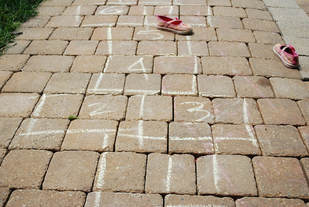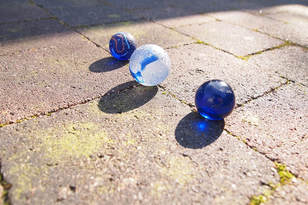Summertime reminds me of the classic simple games we used to play outdoors as kids. Back then, they were just a source of fun and laughter, fights and scuffles. Now, extensive research has proved that it was all not just mere ‘fun’; slowly but steadily these games were unknowingly helping us to pick up certain basic skills that would come in handy later in our lives.
Here are 3 examples of such classic outdoor learning games which are fun even today:
Hide and Seek
Here are 3 examples of such classic outdoor learning games which are fun even today:
Hide and Seek
Every one of us at some point in our lives has played the game of hide and seek. I remember cheating almost every single time when I was supposed to count till 20 with my eyes closed facing the wall; I would barely reach the number 10, shout out loud ‘Ready!’ and then rush to find the others before they had managed to find a safe hiding place for themselves. It was more fun if the group was relatively large; 4 or more players. In addition to the fun factor, games like hide and seek help kids learn how to figure out stuff and hone their problem-solving skills – what could be the common and not-so-common hiding places? Taking turns themselves to hide and seek as well as giving others a chance to do so inculcates a sense of teamwork in children and provides the ideal challenging environment for them to learn while playing.
Hopscotch
Hopscotch
This is a game that is played one at a time using a grid with numbers 1-9 drawn on a flat surface. The rules are simple – the player needs to throw a pebble onto one number at a time, and avoid that particular numbered box while hopping to-and-fro across all the other boxes on one leg. Landing on both legs at any time or landing onto the box with the pebble means you are out of the game or must start right from the very beginning (number 1). Hopping on one foot requires physical coordination and balance, especially in younger kids. One needs to get into a set rhythm and practice control while hopping onto certain areas while avoiding others, aiding in cognitive skill development in kids. In addition to mastering body control, since hopscotch involves numbers, it can be a good way to brush up on basic math skills for younger kids while playing.
Marbles
Marbles
Ideal for slightly older kids, the game of marbles can be played in a group of 2 or more kids at a time. All you need is a piece of chalk and some marbles. The rules of the game are pretty straightforward – you draw a circle on the ground with chalk, place your marbles within the circle and then try and knock out your opponent’s marbles with one of your own. Right from simple things like taking turns to winning and losing, the game of marbles helps to develop fine motor skills in kids. A simple flick of the wrist needs to be right on target in order to effectively knock the other marbles out of the circle; this requires hand-eye coordination and careful eye-tracking, a precursor to geometry skills in later years.
In the modern day and age, there is no dearth of learning games for kids - in all shapes, sizes, subjects and ages possible. But like they say, some things never go out of style. And games like these are perhaps here to stay, forever.
In the modern day and age, there is no dearth of learning games for kids - in all shapes, sizes, subjects and ages possible. But like they say, some things never go out of style. And games like these are perhaps here to stay, forever.



 RSS Feed
RSS Feed